What are you looking at? Looking at the eyes
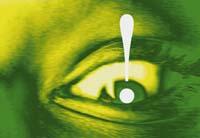
Applications of observational systems
With regard to the applications of these systems, it can be classified in uses for diagnostic purposes and uses for interactive purposes.
Diagnostic uses
Attention or attention is a process that focaliza the ability to understand our environment in a concrete stimulus. It has to do directly with our cognitive part and know the movement of the eyes helps to a great extent to understand these mechanisms. The use of an eye tracking system as a diagnostic tool has generated tools to measure the relationship between eye movement and attention. They can be applied in psychology but also in other areas, especially in marketing and advertising.
Interesting works have been carried out in this field. Recently, relevant diagnostic results have been obtained in neuroscience and psychology. One of the most studied sections is that of eye movements in the processes of reading texts. The analysis of eye movements during reading helps to detect certain errors and pathologies, with dyslexia being one of the best known. The objective of eye tracking systems in this field would be to record the person's visual trajectory to the text so that the psychologist or the corresponding specialist interprets the data. In the same way, studies and works carried out consider the study of eye movements as a valuable tool for the early diagnosis of schizophrenia and strabismus.

Continuing with diagnostic applications, more complex works have also been found that explore smart environments. Each human being follows a pattern by exploring its surroundings. The analysis of eye movements in free perception has positive consequences to understand the mechanisms we use to assimilate the environment.
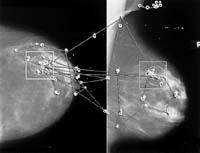
In general, these systems are a powerful tool for understanding and measuring human intelligence. Depending on the application, the consequences can positively modify the behavior of the human being in certain actions. It is known that lack of attention causes accidents in driving. In recent times, important efforts have been made in automotive. Undoubtedly, the analysis of the eye movements of the driver is a perfect tool to detect the lack of attention and the sleep of the driver. The experimental results will serve to get safer cars in the future.
Similar uses can be found in industry and medicine. In the industry, the registration and quality control of the products is often done through sight, and a bad analysis can have serious consequences. However, it may be more serious than a specialist to explore a little resonance or other medical imaging. The analysis of eye movements, both in industry and medical imaging studies, can be used to detect repetitive or scarce inspection strategies of the human being.
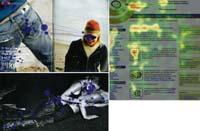
Along the same lines, studies on web pages have already begun to establish certain design principles. According to the studies carried out, in general, the upper left section is first explored on the website. The results indicate that we try to search for capital letters, which appear to be normally in that area.
Interactive uses
The interactive uses of eye tracking systems should be understood within the context of human-computer communication. In this sense, in some situations in which it is not possible to use the hands are presented as an interesting option.
The motor capacity of the human being, that is, motor control, is affected by numerous diseases and pathologies such as multiple sclerosis, amyotrophic lateral sclerosis, cerebral palsy, bone marrow damage and cerebral infarction, among others. Despite their peculiarities, regardless of their origin, they have as remarkable characteristic the reduction of the motor capacity. Often, this deterioration can reach the maximum measures, provoke total immobility and turn man into a prisoner of his body.
However, usually, even in advanced stages of the disease, the controlled eye movement remains intact and becomes a single way of communication. In these cases, the previous location of the screen of the look can be used as instruction for the computer. With this objective numerous specific software have been created. The most well-known applications are the so-called virtual keyboards. In them, the user of the eye tracking system can select letters and words by looking on the keyboard that appears on the screen and thus complete the phrases. This would allow, to a large extent, to overcome their communication difficulties.

The application of eye tracking systems is broad in the field of disabilities and every day new possibilities appear.
However, there are interactive uses not related to immobility. Its base is the relationship between the point in which the gaze is corrected on the screen and the interest of the user. These are called Gaze Contingent Display (GCD) or interface under surveillance. In them you can adapt the environment of the scanned screen to the user, for example, show more details, use an automatic zoom or create new information related to the previous one.
Similarly, it is interesting to apply these techniques to virtual reality and to the world of cartoons. It is known that this type of work involves a large load of computing. Producing quality images is not such a simple process. The objective of the eye tracking systems would be to guess which part of the image the viewer observes to show this element with better definition and more detail. In the rest of the parts, however, the quality would be lost, thus facilitating the reproduction of the image.
Techniques and monitoring systems of the look
With the above, you can say that eye tracking systems have some application… but what is an eye tracking system? What does its operation consist of? Young and Sheena's work perfectly summarizes the resources offered by technology to follow the eye. In fact, there are several technologies that allow to analyze the human's gaze, being the most known electrooculography (EOG) and videooculography (VOG).
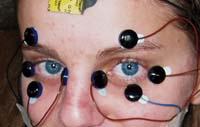
The opponents of this technique use as an argument of opposition interferences. It is undeniable that the muscle movements around have a noticeable influence on the signal. In addition, the dependency of the width of the pupil of the light alters the operation of the electrodes. Consequently, this technique requires very special conditions so that the results obtained are representative data of what happened.
The video techniques use a camera to record the images of the eye. The base is simple: the image of the eye changes as the eye changes. As for these systems, light sources operating in the near infrared (750-880 nm) have a remarkable use. The vision capacity of the human being reaches 700 nm, so this type of light is invisible, that is, we do not appreciate the effect produced in the eye. The objective of the light is, on the one hand, to generate eye images of an acceptable quality and, on the other, to provoke specific peculiarities in the image, which generate reflections on the surface of the cornea.
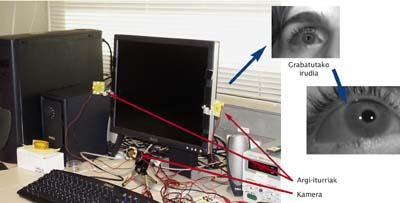
Normally, using process techniques characteristic of the image, special features such as the shape of the pupil, the arrangement of the reflections, etc. The changes in these characteristics are directly related to the variation of the look.
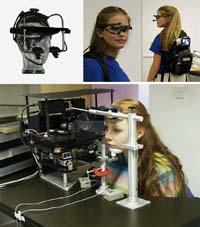
One of the great limits of these systems is the movement of the head. The user must keep the head fixed in an area to not go outside the camera. Despite the scarce importance of this barrier in the field of immobility, in some users and applications it is not an easy task, since the lenses and field objectives that use these systems leave little space to freedom. With the aim of overcoming this barrier, several researchers have proposed new solutions. The best known are the systems that are applied directly on the head, such as a helmet or a scam. The head can move freely, as the camera moves with it.
We also have systems that keep the head fixed by means of a support. The problem disappears because it can be accepted that the head is still. On the part of the user is lost comfort.
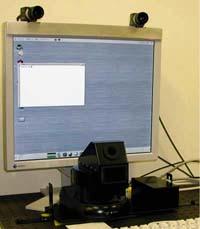
With the above, we can affirm that the future of eye tracking systems is assured. As the techniques used are improved, we can expect a greater listening of these devices.
Be careful, therefore, when you put yourself in front of the shop window... Someone looks at you!
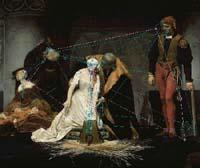
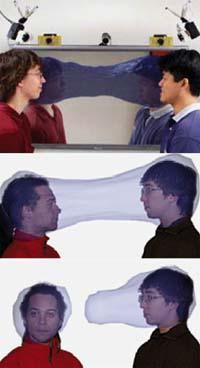
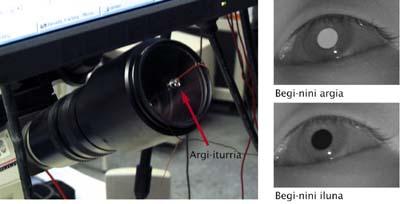
Buletina
Bidali zure helbide elektronikoa eta jaso asteroko buletina zure sarrera-ontzian











